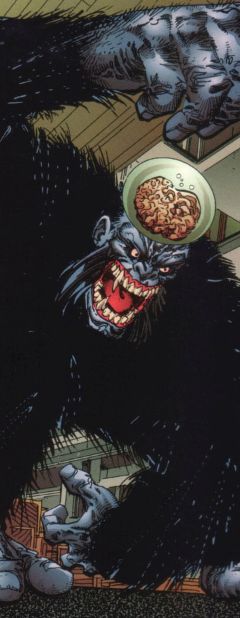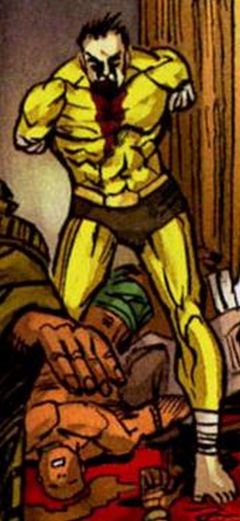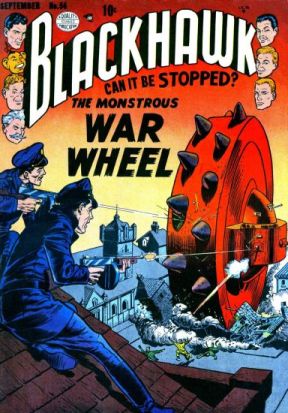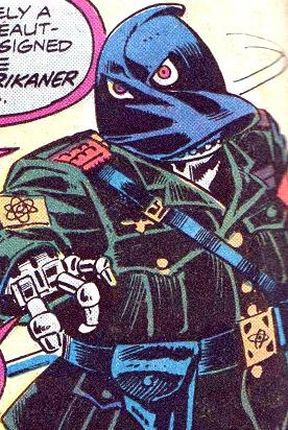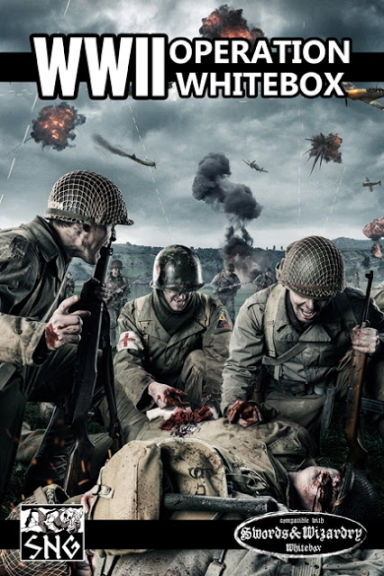A Pair of Allies
Have I mentioned recently how much I like Peter C. Spahn’s WWII: Operation WhiteBox? Also, here are some friendly NPCs who might help your commandos
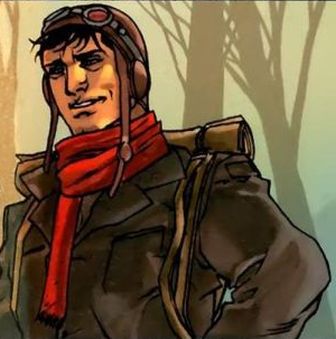
American Ace
Armor Class: 7 [12] (Dex and combat training)
Hit Dice: 3
Total Hit Bonus: +3
Attacks: Weapon or fist
Saving Throw: 16
Special: Ace pilot
Movement: 12
HDE/XP: 3/60
Perry Webb, the American Ace, is one of many costumed operatives active during World War II who were recruited into the United States military. Perry is a skilled mining engineer and an exceptional pilot. He brags that he can fly anything with wings, and there is little cause to doubt this boast. Perry gains a +1 bonus to-hit with aircraft weaponry, and any aircraft he pilots gains a +1 to Armor Class. When he makes a strafing run, there is a 2 in 6 chance (4 in 6 for vehicles) that any character caught in the path of fire is struck by 0-3 rounds.
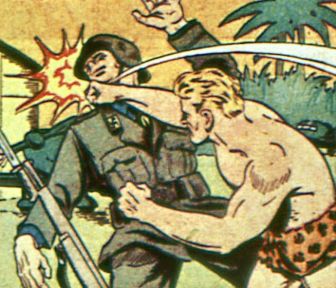
Ka-Zar the Great
Armor Class: 5 [14] (superhuman agility)
Hit Dice: 5
Total Hit Bonus: +8
Attacks: Weapon (+3 damage)
Saving Throw: 16
Special: Speak with animals, superhuman strength and agility
Movement: 15
HDE/XP: 6/400
David Rand is the son of British parents, John and Constance Rand, born to them in 1918 in South Africa. When he was a three-year-old, his family went a trip from Johannesburg to Cairo to visit David’s grandfather; however, they crash landed in the Belgian Congo. As John fruitlessly attempted to flag planes, David developed a bond to many of the jungle’s native animals, befriending some of them, such as Zar the Lion, who watched over this family after David rescued the lion from quicksand. Soon after, his mother died of jungle fever and was laid to rest. David grew up into adolescence with his father, learning how to survive in the jungle, as well as how to read and write. David’s life changed forever the day that Paul de Kraft, a jewel hunter, entered the region searching for jewels along the river. Paul murdered John Rand, and would have done the same to David if it had not been for the intervention of Zar, who slew two of de Kraft’s minions. De Kraft escaped. Orphaned, David was adopted as Zar’s pride and rechristened Ka-Zar.
Ka-Zar is a staunch enemy of the Nazi regime. When he learned that Nazi forces were landing in Italian-controlled Ethiopia, he led an army of animals and destroyed a Nazi airport, ruining the plot to bomb British settlements in Egypt. He and his animal army next attacked a train controlled by the Italian Fascists. Finding an Italian military camp outside of Kenya, Ka-Zar learned that they plotted to attack a British outpost. With the aid of his animal army, Ka-Zar flooded the camp by destroying a dam.
Due to ingesting a magic potion, Ka-Zar has superhuman strength and agility, which explains his AC and to hit bonus. Ka-Zar can lift about fives times his body weight.
